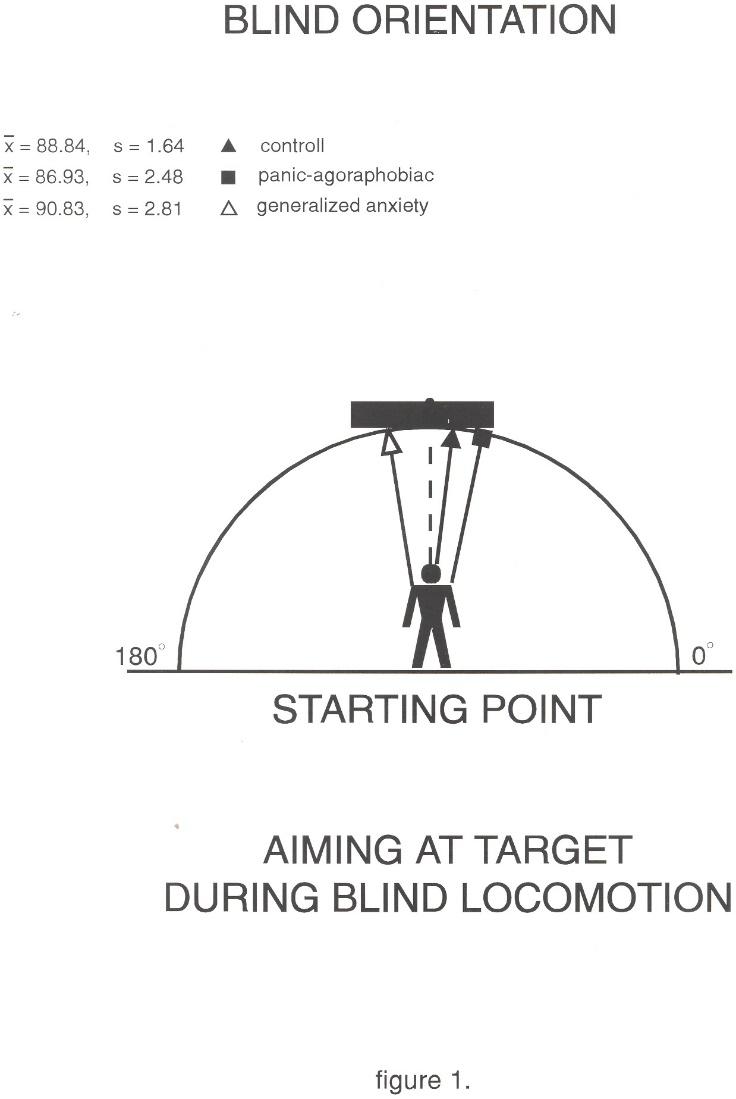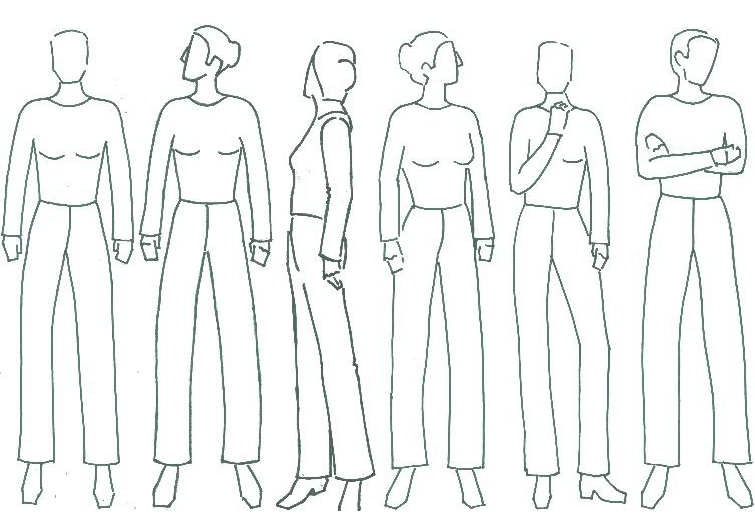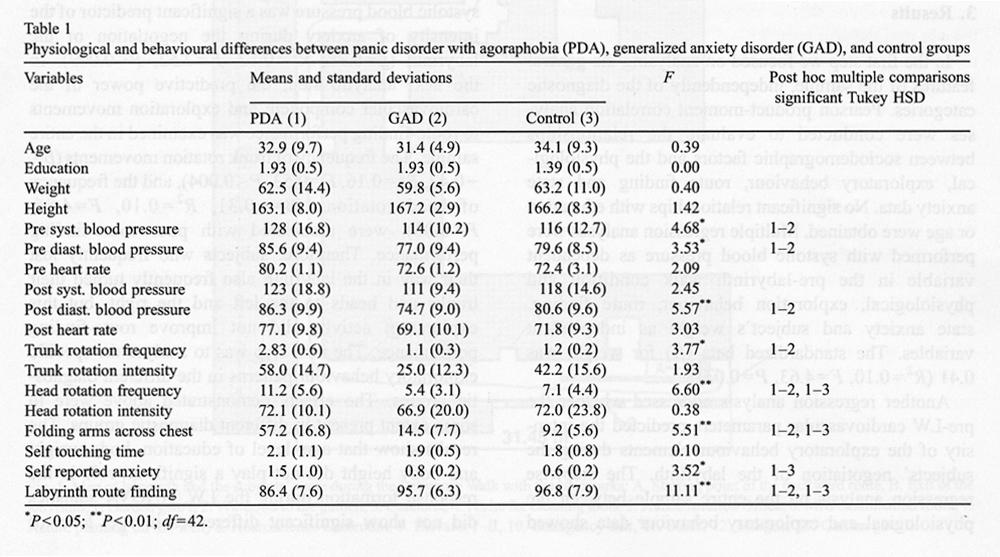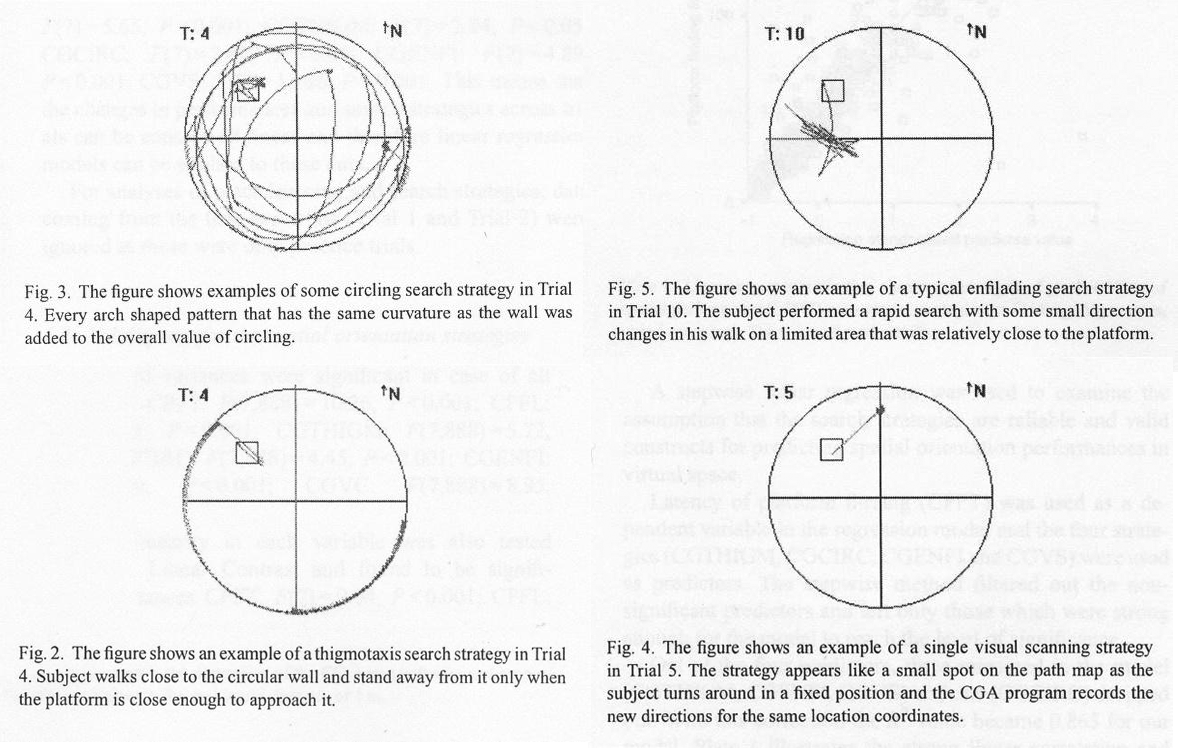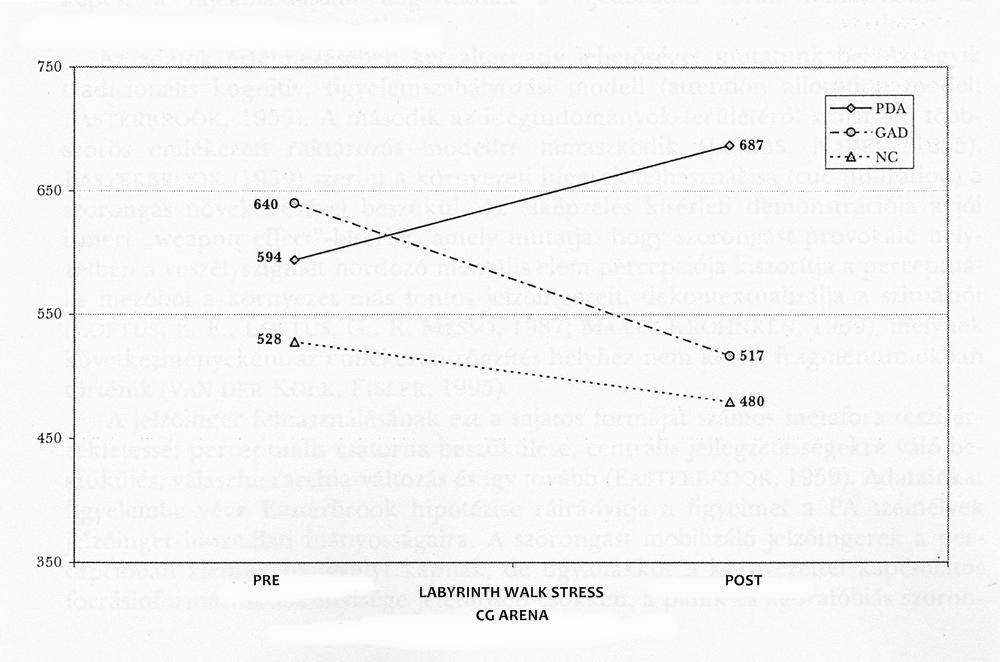- BRAIN, BODY & SPACE
- PERCEPTION & COGNITIVE CONTROL
- EMBODIED CONCIOUSNESS & COGNITION
- COGNITIVE NEUROPSYCHOLOGY & REHABILITATION
BRAIN BODY & SPACE
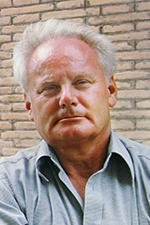
|
Principal investigator:Janos Kallai PhD. |
The representation of extrapersonal space is asymmetric in patients with panic disorder with agoraphobic symptoms. The left hemispace is in part neglected in panic agoraphobic persons in contrast generalized anxiety patients showed symmetric representation or a minimal left tendency during blind navigation. We have suggested the visuospatial analyses of environment is disordered in subject with general tendency to avoidance. The spatial deficit occurs in behavior and cognitive levels as well. This unbalance in spatial representation of surrounding space considered as a basic cognitive avoidance to avoid the confrontation with spatial signals from distal and proximal positions of objects and persons, that followed by ineffective construction of cognitive map for the space.
Ref.: Kállai J, Kóczán Gy, Molnár P, Szabados Zs, Varga J, Ozsváth K, (1996). / Opposite asymmetries in blind locomotor orientation of patients with panic agoraphobia compared to those with generalized anxiety.
INTERNATIONAL JOURNAL OF PSYCHOPHYSIOLOGY 23:(3) pp. 155-161.
(in panic and agoraphobiacs; generalized anxiety disorder, and healthy articipants). Finding a way in an unfamiliar labyrinth is fearful for patients with panic and agoraphobia but is an interesting challenge for patient with generalized anxiety disease and healthy control. Solving similar task, to find the way toward exit, requires effective exploration strategy. When the turning
point in the labyrinth is much, the egocentric representation based route-finding strategy is not enough to the success. To find the adequate way an allocentric based way – finding strategy is required which involves a construction of a cognitive map independently from the person’s egocentric positions and S-R learning. We found that patients with panic and agoraphobia lost their capacity to construct allocentric representation from their environment and unable to construct adequate map from the labyrinth. frequently missed their way in the labyrinth but their cue-learning remained intact. Similar deficit was not found in generalized anxiety patients and healthy control.
BEHAVIOURAL AND COGNITIVE PSYCHOTHERAPY 23: pp. 145-152. (1995).
Kallai J, Karadi K, Bereczkei T, Rozsa S, Jacobs WJ, Nadel L. (2007). / Spatial exploration behaviour in an extended labyrinth in patients with panic disorder and agoraphobia.
PSYCHIATRY RESEARCH 149:(1-3) pp. 223-230.
Completing the labyrinth walk, navigation in the corridor system of a hospital,psychophysiological and etho-behavioral parameter have been registered.Type of exploration body movements during labyrinth walk in the next order: reference position, head or chest rotation to right, left or turning back, free hand movements, play with dress, watch, or trinkets, folding arms across the chest.
We found that “folding arms across the chest” body gesture indicated that patients with panic and agoraphobia symptoms avoided the haptic exploration of the wall of labyrinth and their hands were passive during finding the exit. The folding arms across the chest gesture involves an obsessional self – centered definition of own body, keeping its borders and considered as a fearful defense to reject unfamiliar and dangerous environmental stimuli.
In another studies, exploring the several variation of navigation strategies, healthy participant’s spatial behaviors have been assessed by a cross-cultural way finding questionnaire.
We found that the feeling of personal safety negatively correlates with way-finding anxiety. When an individual navigates and explores an unfamiliar environment male uses way-finding strategy that based on allocentric representations, in face female uses egocentric representation based route-finding strategies. Males with elevated anxiety scores use female like route – finding strategy and their spatial knowledge based on egocentric representations. The fixation in the egocentric representation using may be found in subject who have phobic type fear and anxiety that mainly appeared in agoraphobic avoidance.
Other results suggest that agoraphobic avoidance behavior and fixation in egocentric frame of references can occur not only among individuals with clinical levels of anxiety, but also among healthy individuals as a result of unique upbringing conditions. The representations of parents’ rearing behavior adversely affect a person’s process of experience. The parent rearing experiences influence on the exploration strategy utilization in unfamiliar environment.
Sex Roles Vol. 47, Nos. 9/10, November.
Kerekes, Zs., Révész, Gy., Kállai J. (2011). / Enhanced sensitivity to fear-related avoidance among healthy young adults: agoraphobic experiences and early representation of parental rearing behavior. Elkerülő magatartás és korai tárgykapcsolatokra való visszaemlékezés.
Mentalhigiéné és Pszichoszomatika, 12, 125-147. DOI:101556/Mental.12.2011.2.2
During labyrinth walk and in vivo desensitization therapy we observed a particular hiding or safety seeking behavior in panic-agoraphobics patients and fearful healthy control as well. They traveled closed to the wall in the labyrinth and in the streets as well. We want to know who this exploration strategy or pattern behaves in a computer generated environment where the navigation signals and configuration of environment can be correctly operationalized. In a Morris-type Computer Generated Virtual Arena for humans maze, CG Arena (developed by William J. Jacobs, Lyn Nadel and et al. 1998), were used. Three main exploration strategy have been found while a person finding a way toward a hidden platform. Our results point to the fact that efficient coping of the CG Arena maze involves two representation form and related navigation strategies. First, the egocentric based, viewer dependent thigmotaxis which in the first phase of the CG Arena task recalibrates the spatial layout of the surrounding in an egocentric point of view. Second, the allocentric based, viewer independent, visual scanning which in the second phase of space learning construes a cognitive map on the surrounding. The CGA resolved successfully in that case if the egocentric representation withdraws and allocentric representation comes into the foreground in the second phase of place learning. This background – foreground dynamic depend on personal bias. Individuals with fearful avoidance the egocentric – allocentric shift comes later because this persons fixated to used egocentric representation. In contrast subjects with generalized anxiety and healthy subjects with low anxiety reference frame is fluently exchanges from egocentric reference using to allocentric one in the initial part of the second phase of place learning.
Behavioral Brain Research, 159, 187-196.
Kállai J., Makány, T., Csatho, Á., Karádi, K., Horváth D., Lábadi K. B., Járai, R., Nadel, L., Jacobs, W. J (2007). / Cognitive and affective aspects of thigmotaxis strategy in humans.
Behavioral Neuroscience, 121,1, 21-30.
The three patterns can be seen below in the next order: circling, enfilading, thigmotaxis (wall following), visual scannin:
The successfulness in CG Arena maze require a fluent shift from egocentric to allocentric representation that can be detected in thigmotaxis or visual canning strategy utilization and short hidden platform finding latency. Before and after a stressful labyrinth walk CG Arena task was completed to control the effect of anxiety and avoidance to the spatial navigation performances. We found that patients with panic and agoraphobic symptoms showed limited efficiency in CG Arena task after labyrinth walk, similar spatial learning disorder have not been found in patients with general anxiety and in healthy controls. Therefore the anxiety provoking situation impairs spatial learning because inhibits the construction of allocentric representation and the exploratory strategies and frame of reference using and fixated in egocentric, viewer dependent position.
Behavioral Neuroscience, 121,1, 21-30.
In this study fMRI BOLD response have been analysed during a visual analysis of spatial configuration of three persons from egocentric point of view (animation: red colored spotting) and when the same spatial configuration is viewed in allocentric point of view (blue colored spotting). The results demonstrated that egocentric and allocentric exploration of spatial configuration activates a mutual neural network on the dorsal areas of the brain from anterior to posterior axis but using allocentric frame of reference the activity drifted toward in dorsolateral and ventral areas of the brain. Comparing the egocentric – allocentric framework the allocentric activations tend toward posterior, the ventral areas of allocentric activation tend toward anterior areas of brain. In this investigation the medial temporal lobe activity, involving the hippocampus have not been analysed. (the animation below start with .mov decoder).
Congress of Hungarian Psychological Association XIX. Pécs (Önazonosítás első személy és harmadik személy perspektívájából: fMRI vizsgálat. A Magyar Pszichológiai Társaság XIX.,) Pécs, 2010. május 27-29. p. 167.
- Kállai, J., Kocsor, F., Karádi, K., Kerekes, Zs., Janszky, J. / Where is myself and my body? Self – image recognition in context of egocentric and allocentric frame of reference: A fMRI study. (submitted ms. to Neuropsychology).
Based on the mentioned findings a new element of cognitive and behavioral therapeutic method has been worked out and standardized and validated by us.
Journal of Behavior Therapy and Experimental Psychiatry, 1999, 30, 4, 273-288.
Nine individuals diagnosed with panic with agoraphobia received three elements of Attentional Fixation Training (AFT): Directed attention to the external environment, directed topographical synthesis, and directed orientation in space-time to control characteristics of panic. They then walked a standard 2.5 km route and practiced these elements upon entering one of the five panic-inducing situations: (a) walking alone near a busy street with the examiner following at 20 m, (b) walking alone near a busy street with the examiner out of client’s visual field, (c) shopping with the examiner present, (d) traveling on a bus alone, and (e) shopping alone. Heart rate was monitored in each of these five situations. Except for the case of using public transport, heart rate activity decreased to a considerable extent during AFT practice suggesting AFT elements provided a good way to control symptoms of panic in
vivo. Results were discussed within the confines of a model suggesting that an attentional deficit, which produces a spatial disorientation disorder that maintains both panic and agoraphobia, can efficiently be overcome by means of all three AFT tools.
The organization of peripersonal space based on egocentric representation but debated the structure and function of the border between peri- and extrapersonl space and their representation. The human body one case is a starting reference point and treated as foreground of the action in the other cases behaves as a background for cognitive map of the surrounding. The border of this peri- and extrapersonal space unbalanced. One person incorporates large amount of scenes and objects into his inflated own body borders, other is critical to incorporate ownership or alien experiences. Our conducted study with Rubber Hand Illusion revealed that the participants with weak own body borders give vivid response to RHI and have skizotypy predisposition, magical thinking, and elevated empathy related interpersonal sensitivity, further significant space representation disorder in the left side of peripersonal hemispace may be found. There are a transient and inflated borders between
body and surrounded space.
Patients with dopamine deficit tested by voxel based morphometry conscious and automatic behavioral response to body schema and body image dissociation induced task (ownership, disownershp and proprioceptive drift).
One’s own body and other person’s body discrimination and replacement by manipulation of coherent and incoherent multimodal stimulation in clinical and healthy population. Personal immersion into virtual environment.

